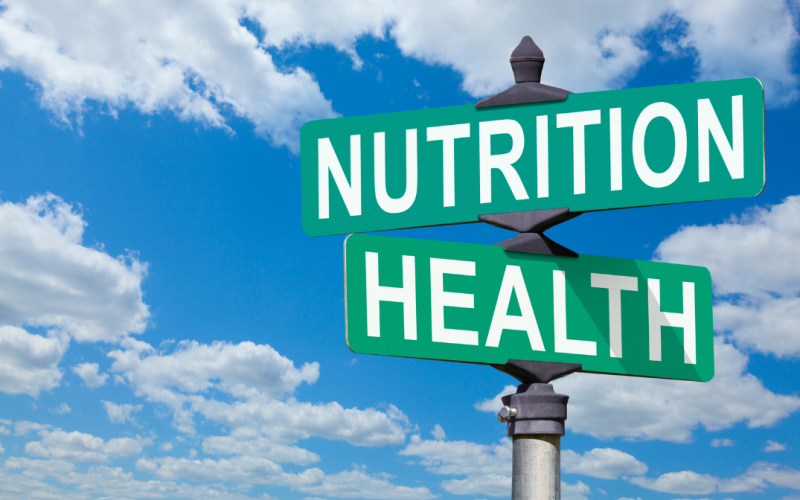Introduction
When it comes to well-being, nutrition education plays a vital role in shaping healthier choices for people of all ages. With rising rates of diet-related illnesses, learning the basics of balanced meals and nutrient intake is more important than ever. By gaining nutrition knowledge, individuals can understand what fuels their bodies, how to plan meals, and why certain foods help optimize energy and health. In this article, we explore how nutrition education empowers healthier choices, the methods that work best, and the long-term benefits for individuals and communities alike.
Why Nutrition Education Matters
Nutrition education goes beyond teaching calories and food groups. It equips people with the skills to read labels, compare options, and create balanced menus. Here are key reasons why it matters:
- Prevents Chronic Diseases
Poor diet is linked to heart disease, diabetes, and obesity. Education helps people choose whole grains, lean proteins, and fresh produce to lower these risks. - Supports Growth and Development
Children and teens need the right nutrients for healthy growth. Teaching them early sets habits that last into adulthood. - Boosts Mental Health
Certain vitamins and minerals, like omega-3 fatty acids and B-complex vitamins, support brain function and mood regulation. - Encourages Lifelong Habits
When people learn why and how to eat well, they are more likely to stick with healthy habits even under stress or busy schedules. - Reduces Healthcare Costs
Preventing diet-related illnesses through education lightens the burden on healthcare systems and families.
Key Components of Effective Nutrition Education
To truly empower healthier choices, nutrition programs must be engaging, practical, and culturally relevant. Successful programs share these components:
1. Clear, Simple Messaging
Use easy-to-understand language. Explain nutrients in terms people know—like “fiber helps you feel full” rather than “dietary fiber promotes satiety.”
2. Hands-On Learning
Cooking classes, grocery store tours, and taste tests turn theory into action. When people practice shopping for and preparing meals, they retain information better.
3. Label-Reading Skills
Teach learners to spot added sugar, sodium, and unhealthy fats. A quick label check can make a big difference in daily food choices.
4. Goal-Setting and Monitoring
Help individuals set small, achievable goals—like adding one extra vegetable serving per day—and track progress with simple charts or journals.
5. Community Involvement
Programs succeed when local leaders, schools, and clinics partner to offer workshops, support groups, and follow-up sessions.
Methods for Delivering Nutrition Education
There are many ways to share nutrition knowledge. Choosing the right method depends on the audience, setting, and resources available.
School-Based Programs
- Curriculum Integration: Include nutrition lessons in science or health classes.
- Garden Projects: School gardens let students grow and taste fresh produce.
- After-School Clubs: Cooking clubs encourage teamwork and practical skills.
Workplace Wellness Initiatives
- Lunch-and-Learn Sessions: Short presentations on meal planning or snack swaps.
- Healthy Cafeteria Choices: Label menu items with calorie counts and nutrient highlights.
- Incentive Programs: Reward employees who attend workshops or meet health goals.
Community Workshops
- Public Health Clinics: Host free seminars and distribute easy-to-follow guides.
- Farmers’ Market Booths: Demonstrate simple recipes using local produce.
- Mobile Apps and Online Resources: Provide meal plans, videos, and progress trackers.
One-on-One Counseling
- Registered Dietitians: Offer personalized plans for people with special needs or conditions.
- Peer Educators: Train community members to coach friends and family.
Overcoming Common Barriers
Despite its benefits, nutrition education faces challenges. Addressing these barriers ensures more people can make healthier choices:
Barrier 1: Cost Concerns
Solution: Teach budget-friendly shopping tips—like buying in season, choosing frozen vegetables, and comparing unit prices.
Barrier 2: Time Constraints
Solution: Share quick meal ideas and batch-cooking methods that save time on busy weekdays.
Barrier 3: Cultural Preferences
Solution: Adapt recipes to include traditional ingredients and flavors, making healthy eating feel familiar and enjoyable.
Barrier 4: Misinformation
Solution: Combat myths by providing clear, science-based facts and debunking common diet rumors.
Measuring Success in Nutrition Education
Tracking the impact of nutrition programs helps refine lessons and justify funding. Common success measures include:
- Knowledge Gains: Pre- and post-tests to assess what people have learned.
- Behavior Changes: Surveys or journals tracking fruit and vegetable intake, water consumption, or sugary drink reduction.
- Health Outcomes: Monitoring changes in weight, blood pressure, or cholesterol levels over time.
- Program Engagement: Attendance rates, repeat participation, and satisfaction surveys.
By combining these metrics, educators can see which strategies work best and make improvements.
Long-Term Benefits for Individuals and Communities
Investing in nutrition education yields wide-ranging rewards:
Individual Benefits
- Better Energy and Mood: Balanced meals prevent blood sugar crashes and support mental health.
- Lower Disease Risk: Consistent healthy eating reduces chronic disease incidence.
- Improved Productivity: Well-nourished individuals focus better at work and school.
Community Benefits
- Healthier Workforce: Fewer sick days and lower healthcare costs.
- Stronger Local Economy: Demand for fresh produce boosts local farmers and markets.
- Enhanced Quality of Life: Communities with good nutrition education often see lower poverty-related health issues.
The Future of Nutrition Education
As technology advances, so do opportunities to empower healthier choices:
- Virtual Reality Cooking Classes: Immersive experiences that teach kitchen skills.
- AI-Driven Meal Planning: Apps that craft personalized menus based on preferences and health goals.
- Wearable Nutrient Trackers: Gadgets that monitor nutrient intake and provide instant feedback.
- Social Media Challenges: Viral campaigns that encourage groups to try new healthy recipes together.
Embracing these innovations keeps nutrition education engaging and effective for future generations.
Conclusion
Nutrition education is a powerful tool for guiding people toward healthier choices and lifelong well-being. By focusing on clear messages, hands-on activities, and community support, educators can turn nutrition knowledge into positive action. Overcoming barriers like cost or misinformation makes healthy eating accessible to everyone. As individuals and communities reap the rewards—improved health, higher productivity, and reduced healthcare costs—the value of nutrition education becomes clear. Empower yourself and those around you with the tools and insights you need to make every meal a step toward a healthier future. Remember, small changes add up over time, and with the right guidance, anyone can learn to choose—and enjoy—a healthier path.










